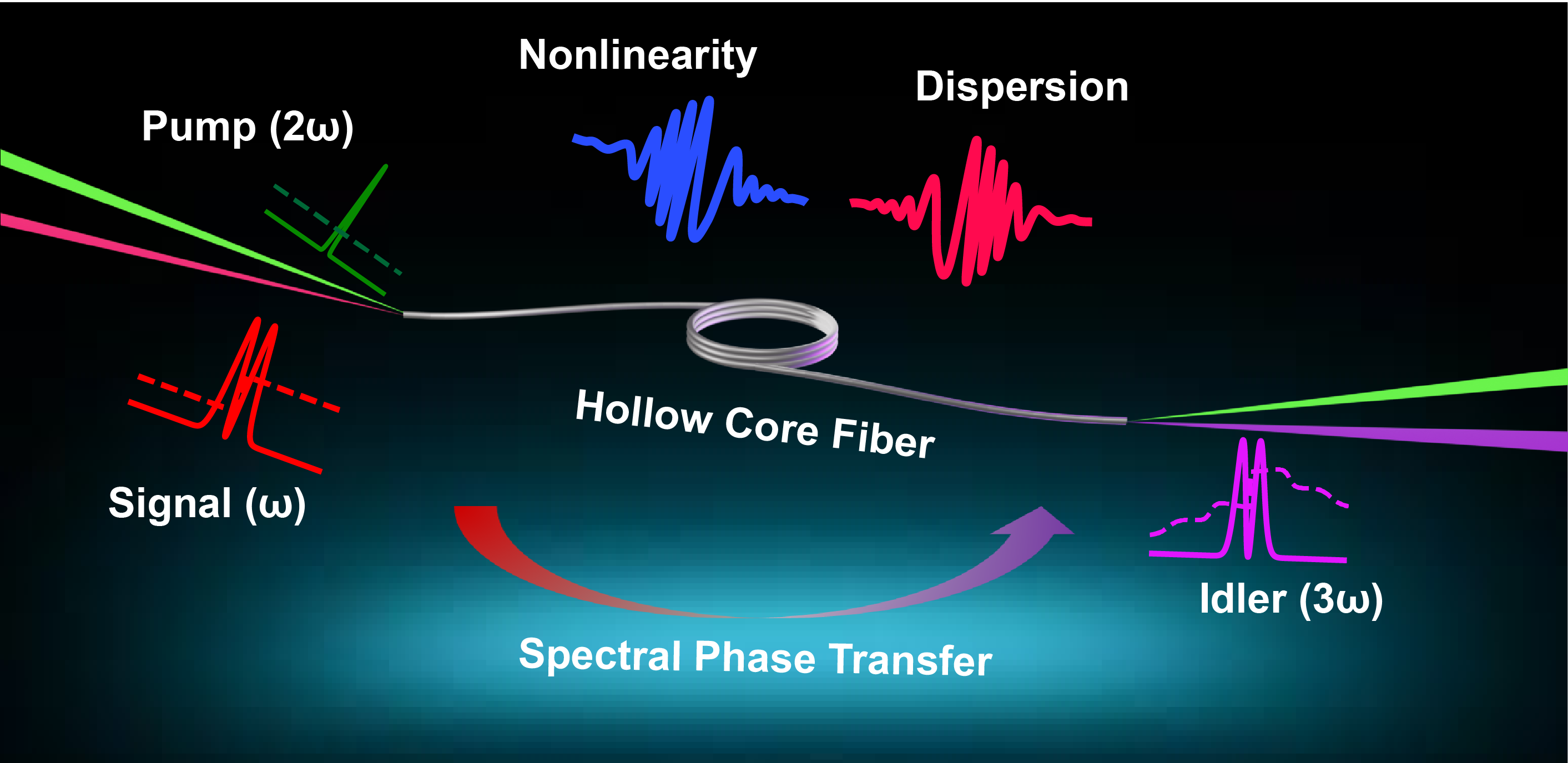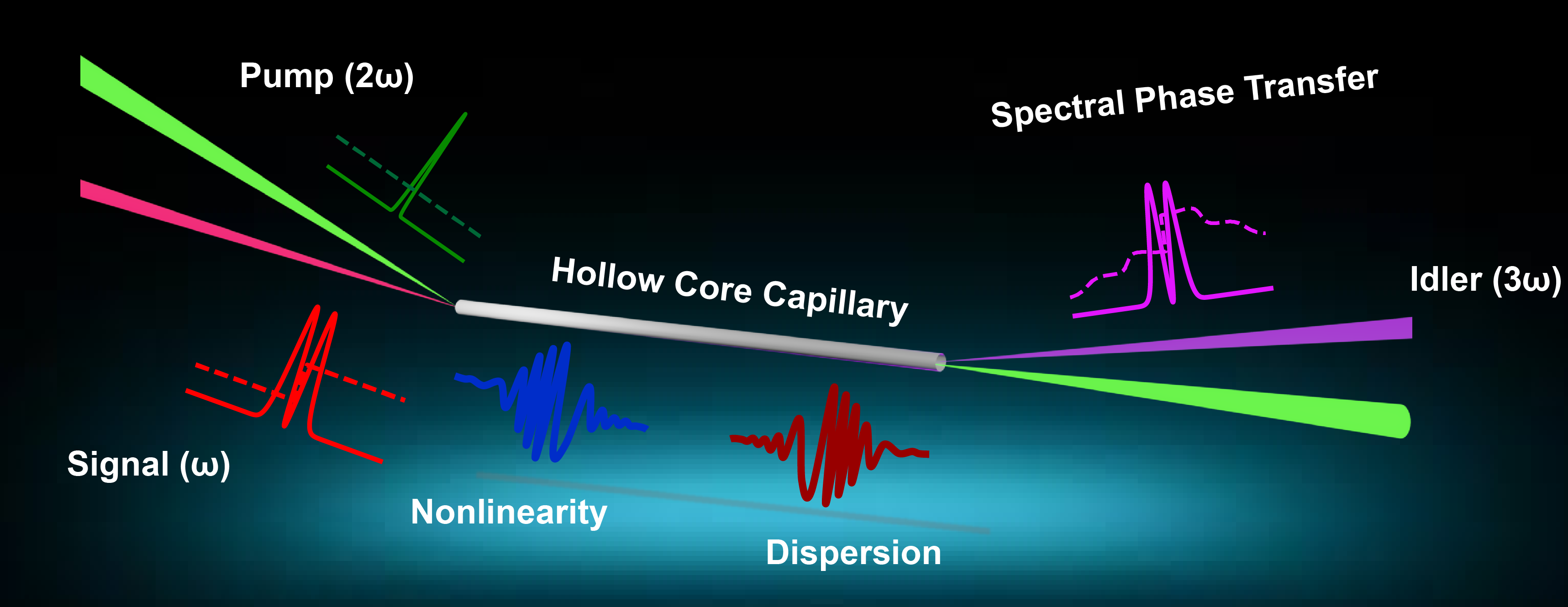Summary:
Researchers in UCLA’s Department of Electrical and Computer Engineering have developed an innovative method for nonlinear frequency conversion and spectro-temporal shaping. This technique operates efficiently at high power levels and offers optical tunability, enabling a wide range of customizable applications.
Background:
Light frequency conversion and spatial temporal pulse shaping have a wide range of applications, including spectroscopy, quantum control, optical computing, and the study of ultrafast dynamics at attosecond and zeptosecond scales. However, current methods for spectro-temporal shaping face significant challenges, particularly in experimental validation, as they often reduce device efficiency. Further, existing phase control devices, such as spatial light modulators or acoustic-optics modulators, are limited by low damage thresholds, making them unsuitable for operation at high peak powers. Thus, there is a critical need for a method that integrates frequency conversion and spectro-temporal shaping while overcoming the tradeoff between versatility and achievable power output.
Innovation:
Professor Sergio Carbajo and his research team have developed a novel method for simultaneous nonlinear frequency conversion and spectro-temporal shaping, capable of handling extremely high peak and average power with rapid transformations while establishing complex phase relationships. The proposed method optimizes the balance between conversion efficiency and phase-matching bandwidth, enabling precise spectral phase transfer at ultrashort timescales and high power levels. This breakthrough promises to significantly advance the capabilities of spectro-temporal shaping, broadening its applicability and precision across a wide range of advanced optical applications.


Credit: Hao Zhang
Potential Applications:
- Optical computing
- Quantum control
- Laser processing
- Ultrafast spectroscopy
- Military and defense
Advantages:
- High damage threshold
- Tunable dispersion properties
- Strong nonlinear response
- Tunable output wavelengths
State of Development
The proposed method has been successfully validated via experimentation for linear, quadratic, and sinusoidally modulated frequency conversion scenarios as well as for both low power and high power regimes.
Related Papers:
Optimizing Spectral Phase Transfer in Four-Wave Mixing with Gas-filled Capillaries: A Trade-off Study
Reference:
UCLA Case No. 2024-254
Related Technology:
Optical Pulse Temporal Shaping Through Nonlinear Mixing (Case No. 2022-286)
Lead Inventor:
Sergio Carbajo, ECE Assistant Professor